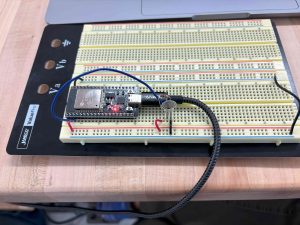This past week, our team has been working hard to stay on track for our upcoming Interim Demo on November 18th. Each team member has been deeply focused on their respective sub-systems, ensuring that each component meets the requirements for our MVP. Recognizing the importance of a clear roadmap, we have updated our Gantt chart to include a more detailed breakdown of the tasks required in the coming weeks, providing a structured path to meet our project goals. In addition to updating our Gantt chart, we have also developed a new test plan proposal.
Each team member has been focused on preparing their sub-system for the Interim demo. However, as our project has progressed, we’ve encountered some challenges, with time being our most pressing concern. Development of the individual sub-systems has taken longer than initially expected, leaving us with only a single week to complete system integration before the demo. This condensed timeline adds an element of risk, particularly in ensuring seamless integration of each component.
To mitigate this risk, our team has doubled down on our commitment to the project. We have collectively agreed to dedicate all available time to work on this project, prioritizing it above other commitments as we approach the demo date. The updated Gantt chart will serve as a vital tool for tracking our progress and maintaining a clear overview of tasks, allowing us to stay organized and adapt swiftly to any obstacle.
The next week is critical to the success of our project. It is absolutely essential that each team member follows the Gantt chart closely, staying aligned with the timeline we’ve established. While the time constraints are challenging, we remain optimistic and committed to a successful MVP demo. We can see a clear path forward, but achieving our goal will require our best effort and complete focus.


